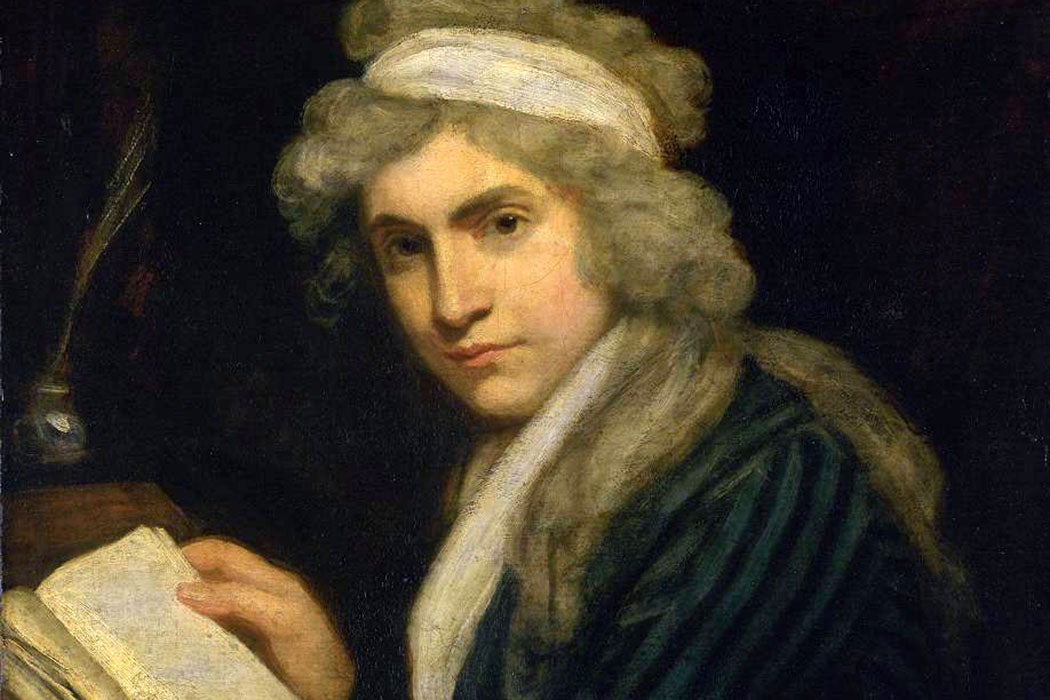In the twenty-first century, even anti-feminists usually acknowledge that women are equal to men; they simply believe women and men ought to have different roles. As historian Rosemarie Zagarri explains, that’s an idea that emerged in the early years of the United States, when Americans were hashing out the question of what rights were and who deserved them.
Thomas Paine’s The Rights of Men, published in 1791, focused on the (male) right to own property, vote, and participate in government. For all the discussion of rights happening in revolutionary America, however, few people publicly connected these ideas to women until Mary Wollstonecraft published A Vindication of the Rights of Woman in 1792.
Wollstonecraft only tentatively suggested the idea of political representation for women. Nevertheless, people were shocked at her insistence that women were rights-bearing creatures with the ability to make autonomous choices. For some commentators, Wollstonecraft’s words suggested a horrifying political equality. One wrote that “once a man raises his wife to an equality with himself, it is all over, and he is doomed to become a subject for life to the most despotic of government[s].”
But it was increasingly clear to many of the republic’s elites that their wives and daughters must possess some sort of rights. While many revolution-era leaders were influenced by John Locke’s individualistic ideas about rights, Zagarri writes that they were also familiar with his Scottish counterparts, like Francis Hutcheson, Thomas Reid, and Lord Kames, who emphasized duty, custom, and hierarchy rather than liberty, contract, and equality. In this view, rights were powers granted (by a Protestant God) for a purpose.
“In practice, then, to assert one’s rights meant to fulfill the duties of one’s God-given station, role, or office,” Zagarri writes. For many writers, male and female, this was a much more palatable way to talk about women’s rights. One mentioned the rights to choose a husband, to join him in instructing their children, to “promote frugality, industry and economy,” and “to be neat and decent in her person and family.”
Want more stories like this one?
From our modern perspective, that might sound absurd, but Zagarri notes that it was also a far cry from treating (white) women as subhuman or second-class humans unworthy of possessing rights—the position many of these same commenters assigned to enslaved people.
Ladies’ magazines began printing satirical accounts of all-female legislatures that aimed to “raise the necessary supply of husbands throughout the United States” or “be the sole judges, as to the propriety, or impropriety, of their own dress and fashion… [and] exact penalties and punishments of offenders.”
Even if it joked about it at first, the idea of rights for women necessarily opened the door to arguments about women’s political participation, which, a century later, finally won U.S. women the vote.







